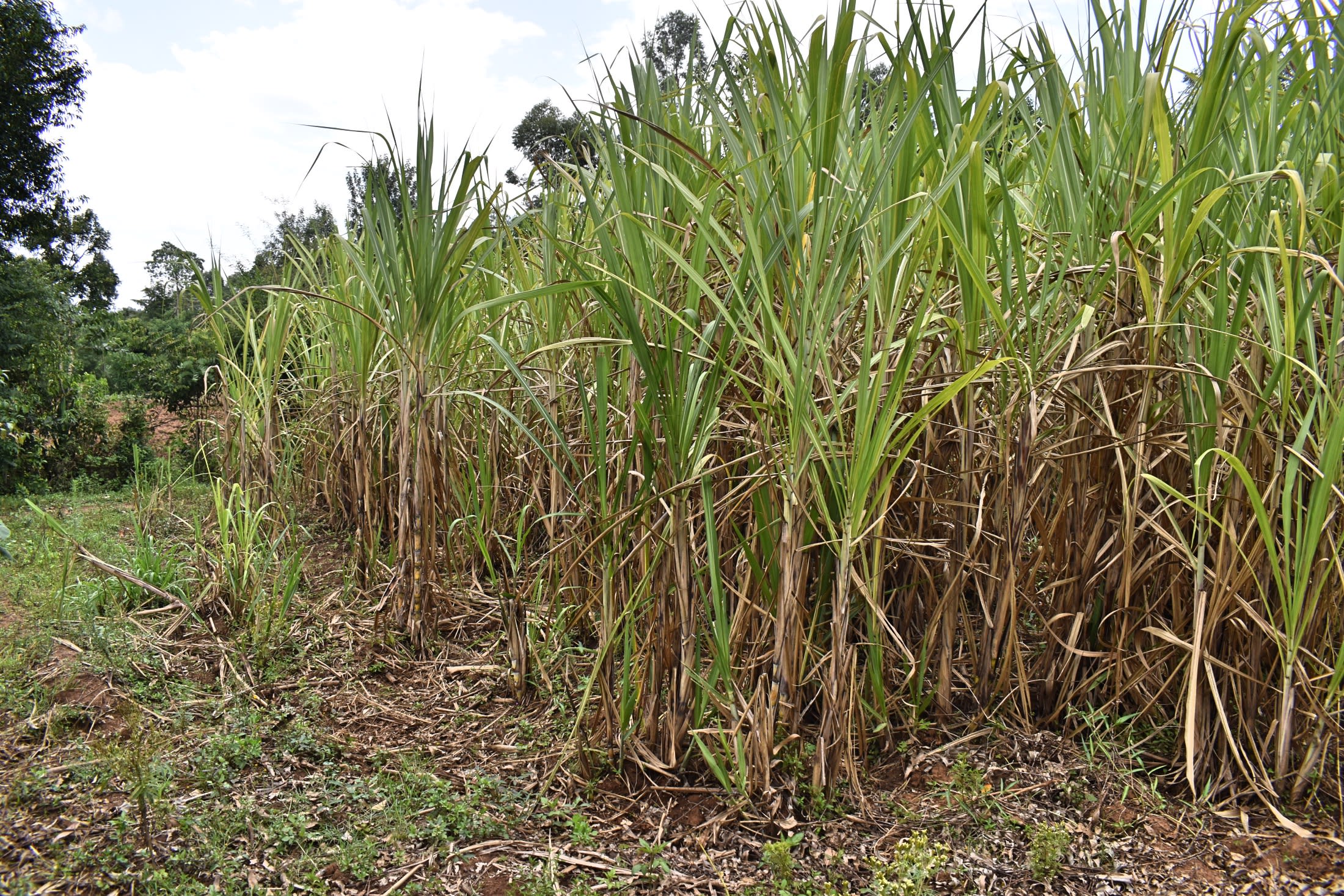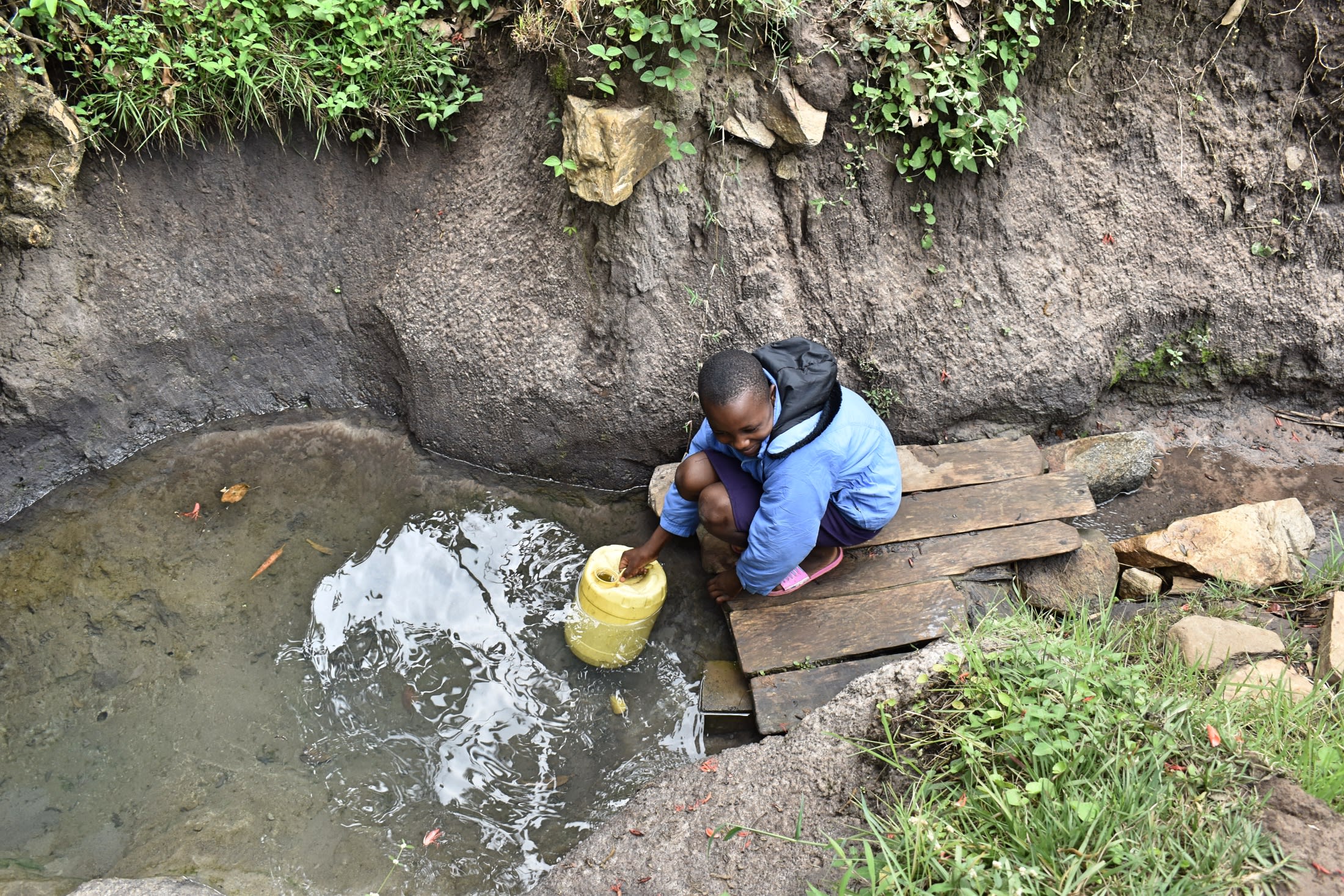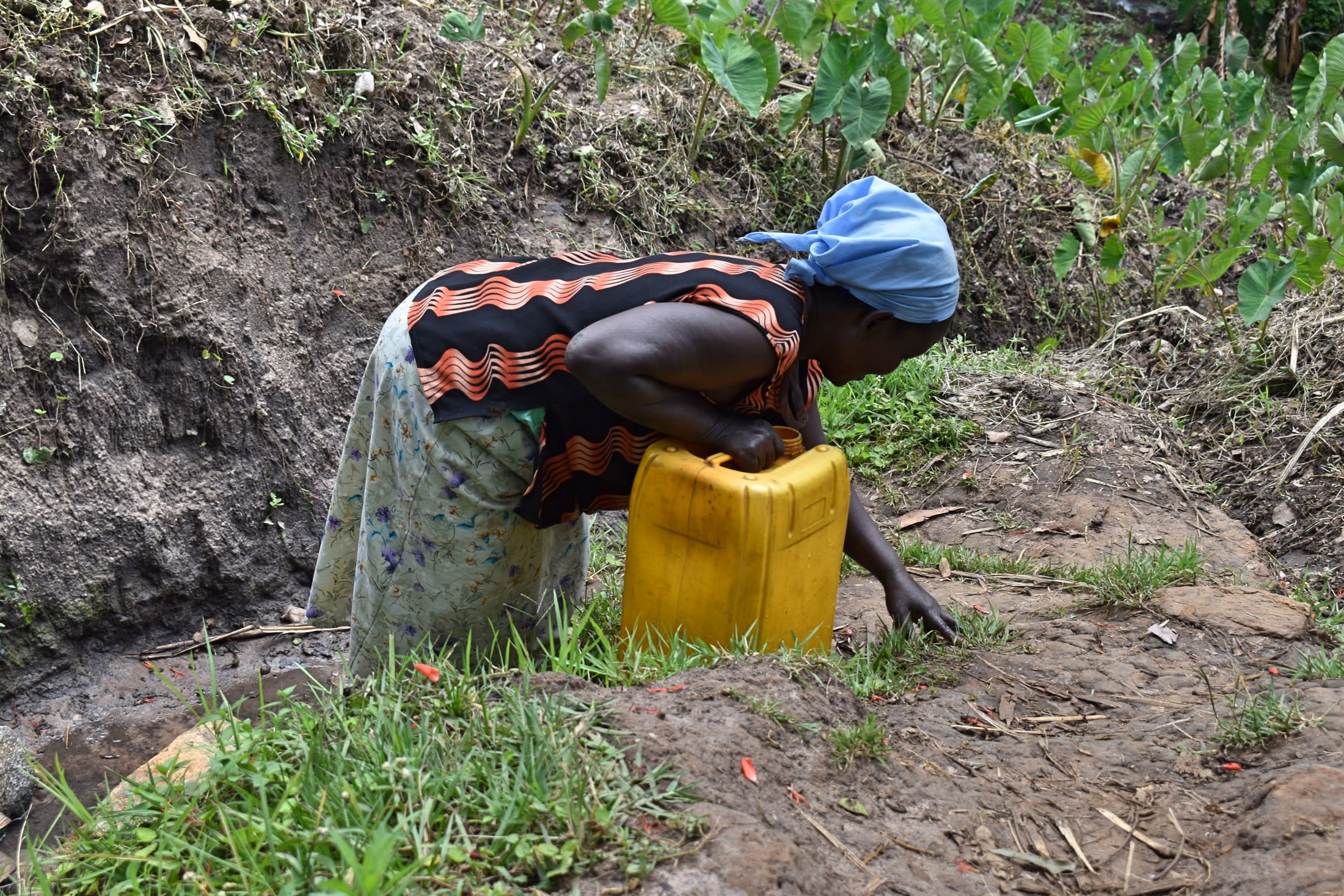The 350 people of Lukova are not healthy or wealthy enough to farm the majority of their own lands. Both the medical and money problems can be attributed to one thing: water.
When our field officers first entered Lukova, they were struck by the vast, rolling hills of sugarcane plantations that lined every road and outlined the homesteads. However, when we asked Lukova's people whose impressive farms those were, we were told that the fields were "leased to rich men" who can afford such an enterprise. Community members in Lukova farm on a much smaller scale.

Pervasive cases of typhoid affect people throughout the entire community, so they spend a lot of their money on medication. One such example is 50-year-old farmer Jane Alfred.
"My wellbeing has been affected [by] using this water," Jane said. "Healthwise, I have experienced water-related diseases uncountable times, not to mention my children and grandchildren. The budget of treating all of us falls back on me since I am a widow."
"Sometimes, I wish I belonged to a community that has a protected spring," said 13-year-old Lillian L. (shown below collecting water). "My friends at school who have protected springs laugh at me and say that me and my family drink 'rotten cats'. To them, cats die in open water pools. They refuse to share my water when I give [it to] them. It makes me sad."

And as if the contaminated water and bullying weren't enough, the spring is also difficult to access, especially for Lukova's oldest and youngest residents.

"Physically, I have to kneel and hurt my knees so that I can carry the filled container out of the spring pool," said Jane, shown above.
An easy-to-access spring with safe water will protect the residents of Lukova from future health issues and open up time and opportunities they've never known before.
What We Can Do:
Spring Protection
Protecting the spring will help provide access to cleaner and safer water and reduce the time people have to spend to fetch it. Construction will keep surface runoff and other contaminants out of the water. With the community’s high involvement in the process, there should be a good sense of responsibility and ownership for the new clean water source.
Fetching water is a task predominantly carried out by women and young girls. Protecting the spring and offering training and support will, therefore, help empower the female members of the community by freeing up more of their time and energy to engage and invest in income-generating activities and their education.
Training on Health, Hygiene and More
To hold trainings during the pandemic, we work closely with both community leaders and the local government to approve small groups to attend training. We ask community leaders to invite a select yet representative group of people to attend training who will then act as ambassadors to the rest of the community to share what they learn. We also communicate our expectations of physical distancing and wearing masks for all who choose to attend.
The training will focus on improved hygiene, health, and sanitation habits in this community. With the community’s input, we will identify key leverage points where they can alter their practices at the personal, household, and community levels to affect change. This training will help to ensure participants have the knowledge they need about healthy practices and their importance to make the most of their water point as soon as water is flowing.
Our team of facilitators will use a variety of methods to train community members. Some of these methods include participatory hygiene and sanitation transformation, asset-based community development, group discussions, handouts, and demonstrations at the spring.
One of the most important issues we plan to cover is the handling, storage, and treatment of water. Having a clean water source will be extremely helpful, but it is useless if water gets contaminated by the time it is consumed. We and the community strongly believe that all of these components will work together to improve living standards here, which will help to unlock the potential for these community members to live better, healthier lives.
We will then conduct a small series of follow-up trainings before transitioning to our regularly scheduled support visits throughout the year.
Training will result in the formation of a water user committee, elected by their peers, that will oversee the operations and maintenance of the spring. The committee will enforce proper behavior around the spring and delegate tasks that will help preserve the site, such as building a fence and digging proper drainage channels. The fence will keep out destructive animals and unwanted waste, and the drainage will keep the area’s mosquito population at a minimum.

 Protected Spring
Protected Spring
 Rehabilitation Project
Rehabilitation Project





































